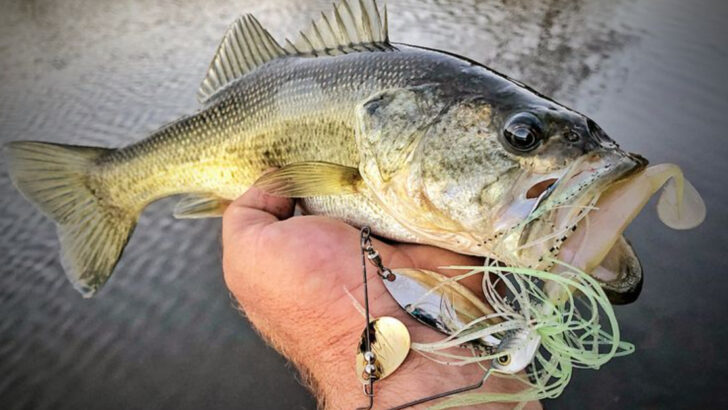Still water looks peaceful—until you try to catch a fish in it.
When the surface is glassy and calm, every cast feels like you’re tossing a rock into a library. Fish spook easy. They get picky. And if you’re using the wrong lure? Forget it. You might as well be fishing with a spoon tied to a shoelace.
This is precision fishing.
The right lure can be magic—a silent assassin slipping through the water, triggering a bite when everything else fails. The wrong one? It’ll send fish fleeing like you just dropped an anchor on their heads.
So what actually works when the water’s dead calm?
We’re breaking down 10 lures that get the job done… and five that will leave you wondering if there’s even fish in the lake. Let’s get into it.
Soft Plastic Jerkbait
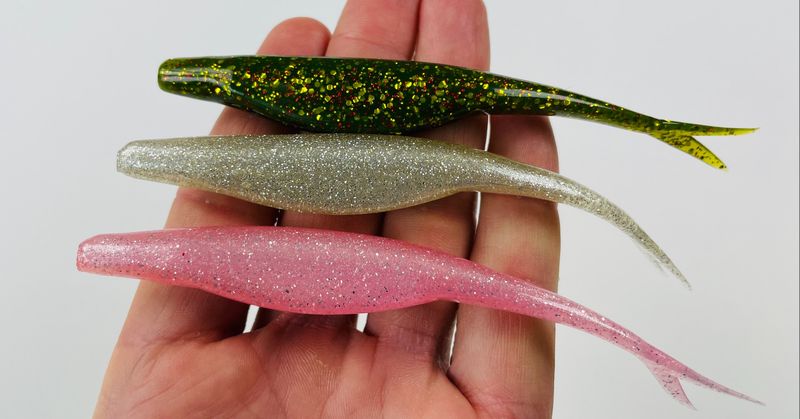
When the water is calm, stealth becomes your best friend. A soft plastic jerkbait glides through the water with a lifelike motion that no fish can resist.
Ideal for mimicking a dying baitfish, this lure can be twitched gently to create enticing movements. Anglers often find success using it in clear, still waters where fish are easily spooked.
A testament to its effectiveness, the soft plastic jerkbait remains a staple in the tackle boxes of many experienced fishermen. Remember, patience and subtlety are key when using this lure.
Topwater Popper
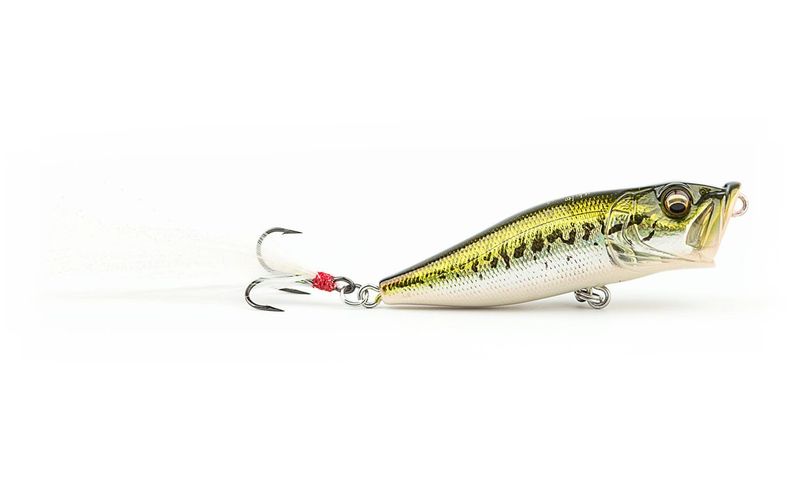
A topwater popper is like a siren call to fish lurking beneath still waters. Its splashing and popping action can trigger predatory instincts in fish.
When the surface is glassy, a popper can be used to create disturbances that mimic struggling prey. This often entices even the most wary fish to strike.
The excitement of watching a fish break the surface for a popper is unmatched, making it a favorite among anglers who enjoy visual fishing.
Plastic Worm
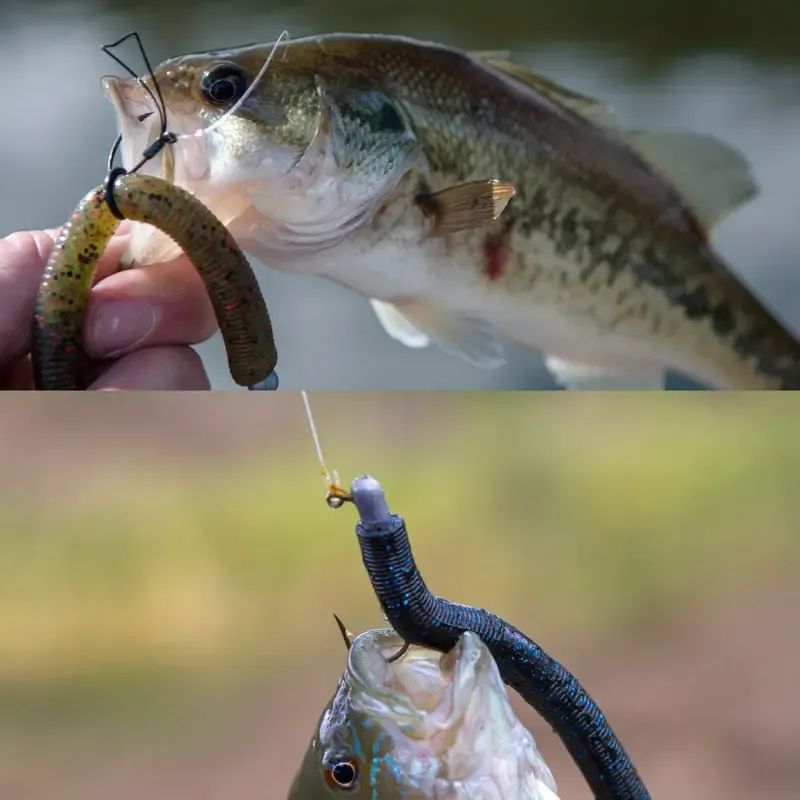
Plastic worms have a reputation for versatility. In dead calm waters, their slow, deliberate fall through the water column can be irresistible to fish.
Rigged Texas or wacky style, these lures work well in clear conditions where fish have time to inspect their prey. The gentle motion of a plastic worm is perfect for persuading finicky fish to bite.
Available in numerous colors and sizes, they allow anglers to adapt to different water conditions and fish species, making them a reliable choice.
Spinnerbait

Spinnerbaits bring flash and vibration to calm waters, attracting fish from a distance. The spinning blade mimics the glint of sunlight on a baitfish’s scales.
For those fishing in murky or stained still waters, the visual and auditory cues of a spinnerbait can draw attention. It’s particularly effective for bass, which are curious by nature.
While it may seem counterintuitive in calm waters, the spinnerbait’s ability to stand out makes it a unique tool in an angler’s arsenal.
Shaky Head Jig

The shaky head jig is all about subtlety. Its design allows for a natural, upright presentation of soft plastics, making it ideal for skittish fish in still water.
This lure excels in getting bites when fish are holding tight to the bottom. The technique involves shaking the rod tip gently to give the lure a quivering motion.
Its effectiveness lies in its simplicity, appealing to fish with its understated yet enticing action. It’s a go-to for anglers seeking a finesse approach.
Crankbait

Crankbaits might seem too aggressive for calm waters, yet their ability to cover water and provoke reaction strikes makes them valuable.
In clear, still waters, a subdued approach with a crankbait can surprise you with results. Adjusting the retrieval speed and depth can entice fish that are otherwise inactive.
These lures come in various designs, allowing you to mimic different prey types. Their versatility is why crankbaits remain a mainstay in any angler’s tackle box.
Finesse Worm
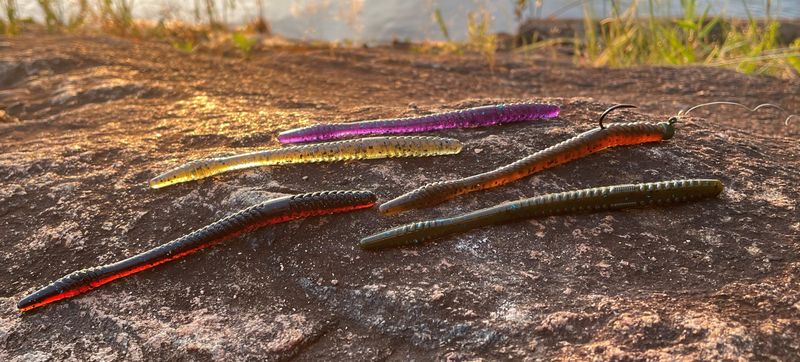
Finesse worms are the epitome of subtlety. Their sleek design and minimal action make them perfect for clear, calm waters where fish have a clear view.
Used with light tackle, they can be rigged in numerous ways to match the conditions. The key is a gentle presentation to avoid spooking fish.
They shine in situations where other, more aggressive lures fail. For anglers looking to entice wary fish, finesse worms are a must-have in the arsenal.
Ned Rig

The Ned rig is an unassuming powerhouse in still water fishing. Combining a small jig head with a buoyant soft plastic, it stands upright on the bottom.
This presentation mimics a feeding baitfish or invertebrate, enticing fish that feed close to the substrate. Its simplicity is its strength, appealing to fish when nothing else works.
Anglers appreciate the Ned rig for its ability to turn a slow day around, making it a secret weapon in calm conditions.
Drop Shot Rig
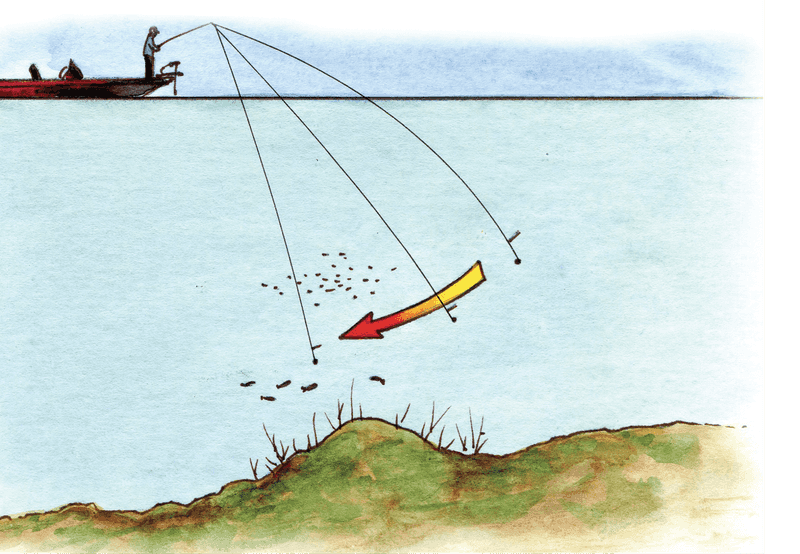
The drop shot rig offers precise control over the presentation of the bait. In calm waters, its ability to suspend a soft plastic at a desired depth can be crucial.
This technique is excellent for targeting fish that are not feeding directly on the bottom. The subtle movements of the suspended lure can provoke strikes from even the most cautious fish.
Its versatility across different fishing environments makes it a favorite among anglers seeking consistent success.
Buzzbait
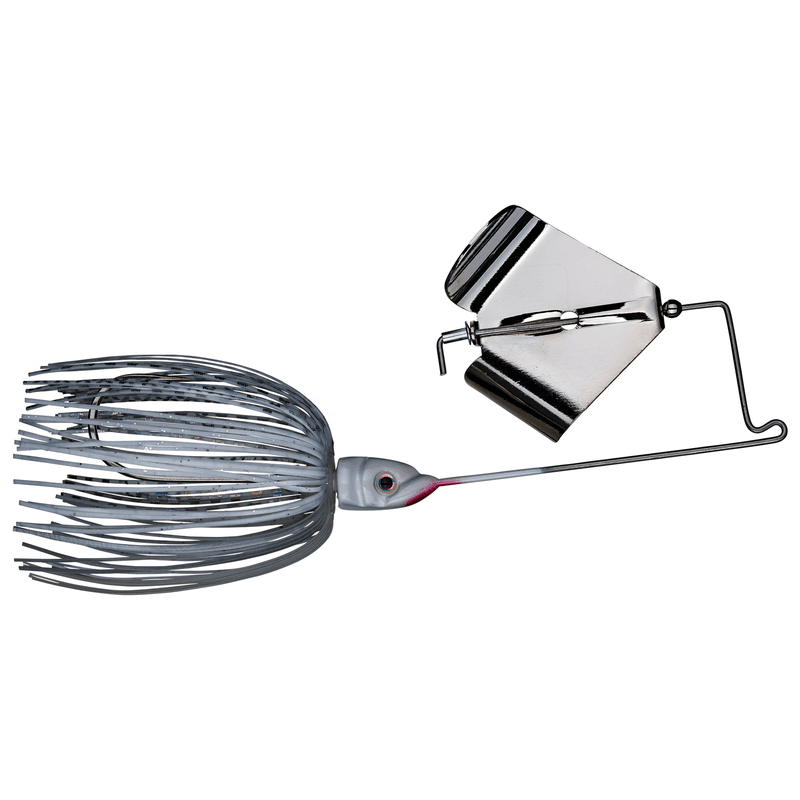
Buzzbaits are surface lures that create noise and movement to draw fish out of hiding. Their ability to mimic surface-skimming prey makes them effective even in calm conditions.
When fish are lurking beneath the surface, a buzzbait can provoke a reaction strike. It’s not just about the noise; the commotion it creates is key.
The thrill of a surface strike is a reward in itself, and using a buzzbait in calm water can turn a quiet day into an exciting adventure.
Lipless Crankbait (Won’t)

Lipless crankbaits often rely on their rattle and speed to provoke strikes, making them less effective in tranquil waters.
In calm conditions, their aggressive nature can actually deter fish that are easily spooked. The lack of a diving lip also means they may not reach the depths necessary to tempt bottom-dwelling fish.
While they have their place in turbulent or deeper water, lipless crankbaits usually don’t shine when the water is still and clear.
Chatterbait (Won’t)
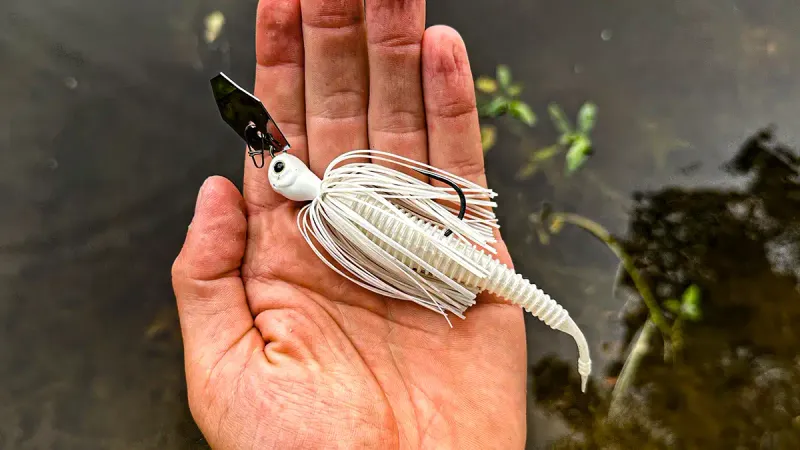
Chatterbaits rely heavily on vibration and sound to attract fish, which can be off-putting in peaceful conditions.
Their design is often too aggressive for the calm, clear water where subtlety reigns supreme. Fish in calm waters tend to be more observant, and a noisy lure might scare them away.
Despite their effectiveness in murky or choppy waters, chatterbaits often fall short when stealth and finesse are needed.
Spoon Lure (Won’t)

Spoon lures can be too flashy for calm conditions, where fish are easily startled by sudden reflections.
These lures are more suited to conditions where their spinning action can provoke reaction strikes, rather than in tranquil settings.
While spoons have been used successfully in various environments, their effectiveness decreases when calm waters demand a more natural and less conspicuous approach.
Frog Lure (Won’t)
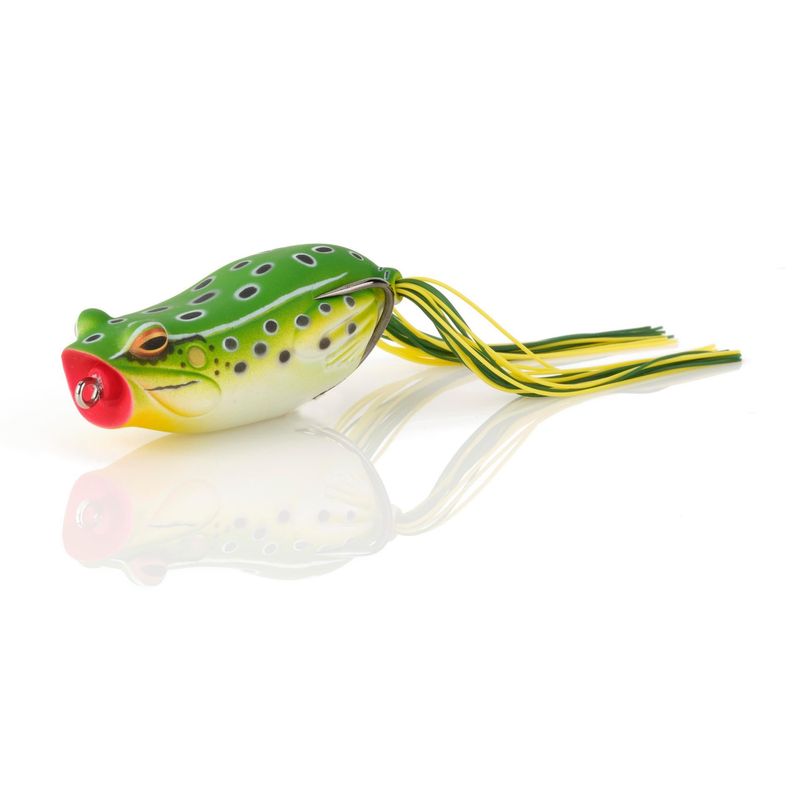
Frog lures are designed for heavy cover and are often overkill in calm, open waters.
Their bulky nature and surface-skimming action can be too much for fish that are already cautious. In still water, the subtlety of presentation is often more effective.
While excellent in dense vegetation, frog lures don’t offer the finesse needed for enticing strikes in serene environments.
Heavy Jigs (Won’t)
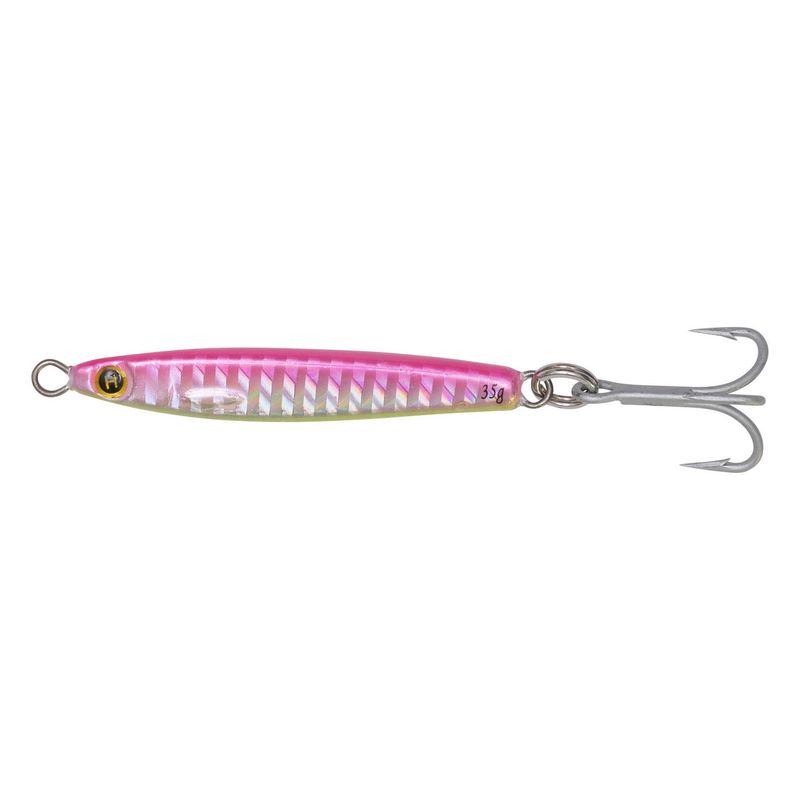
Heavy jigs sink quickly and are designed for deep, active fishing environments. In calm waters, their fast descent can often deter fish.
The heavy profile can create too much disturbance, making them less effective. Fish in tranquil waters require a subtler approach.
While heavy jigs excel in strong currents or deeper waters, their use in still water is limited, where precision and gentleness are key.

